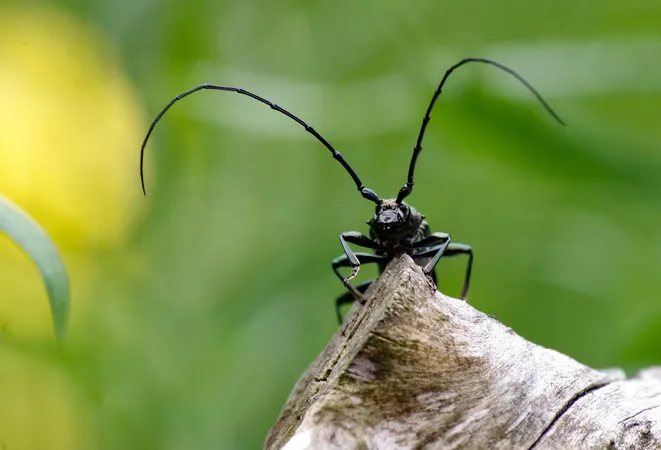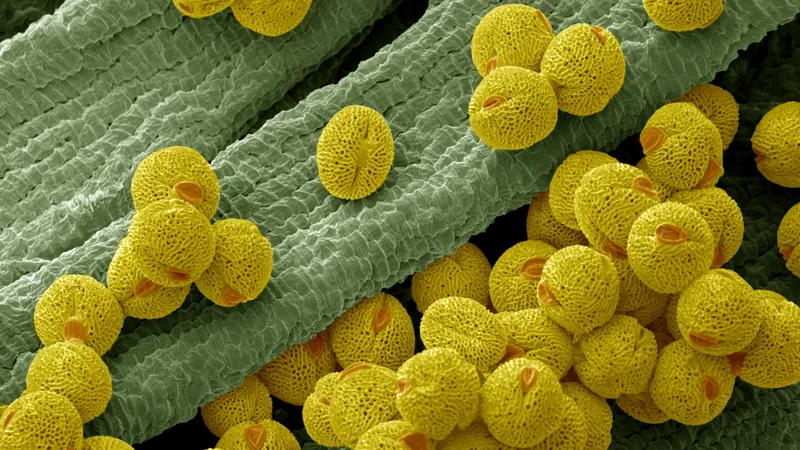
Revealed: Most Species Evolved During Explosive Diversity Events, New Research Shows
2025-08-20
Author: Olivia
Have you ever wondered why some species dominate our planet? British evolutionary biologist JBS Haldane once noted a divine fondness for beetles, hinting at an intriguing truth about our planet's biodiversity: life is wildly uneven across its "tree of life." This family tree of all species, living or extinct, exhibits a complex structure with clusters of species packed tightly together, while other areas remain sparse.
Now, after a long-standing debate among scientists, a groundbreaking study led by researchers in the US has shed light on this unevenness. Published in *Frontiers in Ecology and Evolution*, the study reveals that a significant majority of living species have emerged from limited bursts of rapid evolution, known as "radiations." Dr. John J. Wiens from the University of Arizona states, "Most living species belong to a small number of groups that evolved rapidly within a short time frame."
The researchers investigated the richness and diversification rates of various clades—groups of species originating from a common ancestor. They focused on a wide range of life forms, analyzing land plants, insects, vertebrates, and overall biodiversity across more than 2 million different species.
The Findings Are Clear
The results were striking: across all examined groups, over 80% of known species were confined to a few large clades with unusually high diversification rates. These "rapid radiations" typically occur when new ecological niches become available or when significant evolutionary advancements arise.
Key Drivers of Diversity
Dr. Wiens elaborates on factors that may drive these rapid evolutions. Notable catalysts include multicellularity across various life forms, the invasion of land by different species, and the appearance of flowers in plants, which allows for insect pollination. Historical examples include the dazzling diversification of Darwin's finches in the Galápagos Islands and the rise of bats following the invention of powered flight.
An Unsolved Mystery
Despite these insights, a significant question remains about bacterial diversity. While we know of about 10,000 bacterial species, scientists estimate there may be millions or even trillions yet to be discovered. Given that bacteria have existed for 3.5 billion years, their overall diversification rate is surprisingly low, leading to a cloud of uncertainty around their true richness.
Researchers caution that while their findings reveal exciting patterns within known species, the vast majority of life's diversity may still contain hidden surprises. Thus, the results primarily reflect our understanding of documented biodiversity, leaving room for future exploration.









 Brasil (PT)
Brasil (PT)
 Canada (EN)
Canada (EN)
 Chile (ES)
Chile (ES)
 Česko (CS)
Česko (CS)
 대한민국 (KO)
대한민국 (KO)
 España (ES)
España (ES)
 France (FR)
France (FR)
 Hong Kong (EN)
Hong Kong (EN)
 Italia (IT)
Italia (IT)
 日本 (JA)
日本 (JA)
 Magyarország (HU)
Magyarország (HU)
 Norge (NO)
Norge (NO)
 Polska (PL)
Polska (PL)
 Schweiz (DE)
Schweiz (DE)
 Singapore (EN)
Singapore (EN)
 Sverige (SV)
Sverige (SV)
 Suomi (FI)
Suomi (FI)
 Türkiye (TR)
Türkiye (TR)
 الإمارات العربية المتحدة (AR)
الإمارات العربية المتحدة (AR)